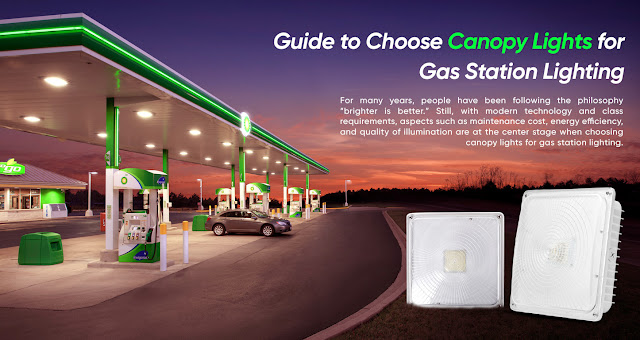For many years, people have been following the philosophy “brighter is better.” Still, with modern technology and class requirements, aspects such as maintenance cost, energy efficiency, and quality of illumination are at the center stage when choosing canopy lights for gas station lighting.
The gas stations have now recognized that a high-performance lighting system is essential for cost-saving, safety, and attracting more customers to their stations. Electrical contractors face various challenges while helping gas station owners to choose the best canopy light options.
There are three kinds of canopy lighting available for gas station lighting:
LED canopy lights: These lights are categorized into recessed mounts, vertical LED lights, and surface mounts.
HID lamps (High-Intensity Discharge): The gas-discharge lamps such as high-pressure sodium lights, mercury vapor lights, and metal halide.
Compact Fluorescent (CFL) and Fluorescent Fixtures.
LED canopy lights are the best choice for gas station lighting. They offer energy savings, low maintenance, and higher illumination quality.
But HIDs like halogen bulbs are also reliable and produce brighter lights. It is hard to choose. Here is the guide which can help you understand the pros and cons of various canopy lights.
WHAT IS A CANOPY LIGHT?
A metal plate covers the junction box in a soffit, ceiling, or wall is a canopy. Any recessed lighting or surface mount with a canopy are considered canopy lights.
Canopy lights are any lighting fixture that is directly installed onto the gas station canopy. It is recommended only to have weatherproof lights as the junction box, and other components are placed on the canopy.
LED VS CFL VS HID CANOPY LIGHTS
For canopy lighting, we will not discuss incandescent lighting fixtures. This is because they are dependent on the white-hot elements for light production, wasting upto 90% of the energy as heat. This is the reason they are outdated and used less.
HIDs, CFLs, and LED canopy lights are the most common lighting fixtures used in commercial canopies. However, each of them has its own pros and cons.
Pros and Cons of Gas Station Canopy Lights
The below table summarizes the pros and cons of the three most common canopy lights for gas station lighting.
Conclusion
Gas station canopy lights are necessary for better brightness and security. The crucial factors such as color temperature, color rendering, brightness distribution, and energy efficiency affect everything from safety to revenue. With our lighting guide, you can easily finalize your Gas station lighting fixture to get effective and efficient lighting. A proper lighting installation can improve work productivity and give confidence to the drivers to choose your gas station over others.


Comments
Post a Comment